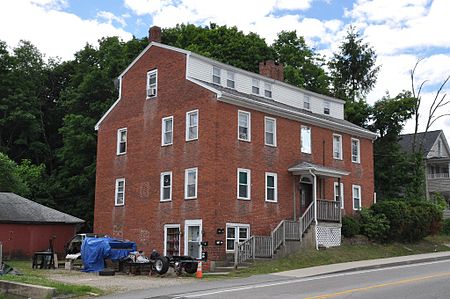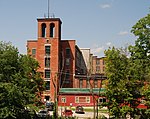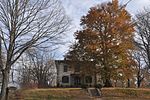William McKinstry Jr. House
Federal architecture in MassachusettsHouses completed in 1815Houses in Southbridge, MassachusettsHouses on the National Register of Historic Places in Worcester County, MassachusettsNational Register of Historic Places in Southbridge, Massachusetts ... and 1 more
Worcester County, Massachusetts Registered Historic Place stubs

The William McKinstry Jr. House is a historic house at 915 W. Main Street in Southbridge, Massachusetts. It is a 2+ story building, unusual because of its distinctive monitor roof. Its construction date is unknown, but it is documented in a painting of Southbridge's Globe Village area in 1822. It appears to have been intended for housing, but the monitor roof is more typically associated with mill buildings. It is known to have been occupied by William McKinstry Jr., son of an early Southbridge settler, in 1836.The house was listed on the National Register of Historic Places in 1989.
Excerpt from the Wikipedia article William McKinstry Jr. House (License: CC BY-SA 3.0, Authors, Images).William McKinstry Jr. House
Wildberry Lane,
Geographical coordinates (GPS) Address Nearby Places Show on map
Geographical coordinates (GPS)
| Latitude | Longitude |
|---|---|
| N 42.091111111111 ° | E -72.041944444444 ° |
Address
Wildberry Lane 13
01550
Massachusetts, United States
Open on Google Maps










